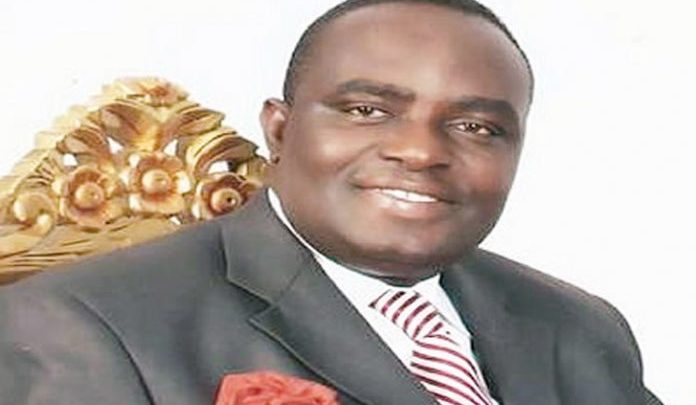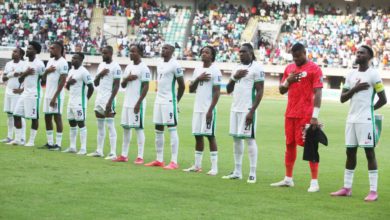
- Speaking on the indicators used by the rankers, Prof. Okebukola revealed that as of July 2019, there are 10 global ranking schemes.
Precisely two weeks ago, the challenge of the poor rating of academic institutions in Nigeria on the global table of universities again came to the fore.
Renowned academic and Chairman of the Advisory Council of the American Council for Higher Education International Quality Group (CIQG), Professor Peter Okebukola, who knows the terrain educated vice-chancellors of public and private universities present at the 14th convocation event of Covenant University, Ota, Ogun State where he delivered a distinguished lecture tagged: World Ranking Parameters: Matters Arising for African Universities”.
Speaking on the indicators used by the rankers, Prof. Okebukola revealed that as of July 2019, there are 10 global ranking schemes.
He identified the Academic Ranking of Universities (ARWU), the Times Higher Education (THE) Ranking, Webometrics Ranking as three among the rankers that stand out.
On indicators used by ARWU, he said the ranker considers every University that has the presence of Nobel Laureate, Fields Medalists, Highly Cited Researchers’ or papers published in Nature of Science.
“Besides, Universities with a significant amount of papers indexed by Science Citation Index (SSCI) are also included”.
Speaking further, he identified low investment in the research enterprise, Research capacity deficits-institutional, human and inefficiencies in the system as part of the reasons African universities were poorly ranked.
Chairman, Strategy and Advisory Committee, National Universities Commission (NUC) emphasized that improved investment in research could strengthen institutional and human research capacities. These he noted, leading to the attraction of international staff and students as part of the indicators by rankers.
Definition of Indicators
In the area of Alumni, he described this as the number alumni of an institution winning Nobel Prizes and Fields Marshal Medals. Alumni are defined as those who obtained Bachelor’s, master’s, or Doctoral degrees from the institution with different weights set according to the periods of obtaining degrees
“The weight is 100% for alumni obtaining degrees in 2001-2010, 90% for alumni obtaining degrees in 1999-2000, 80 % for degrees obtained in 1981-1990 and so on and finally 10% for alumni obtaining degrees in 1911-1920”.
“On Award indicator, this includes the total number of staff of an institution winning Nobel Prizes in Physics, Chemistry, Medicine and Economics and Fields Medals in Mathematics. ARWU defined staff as those who work at an institution at the same time of winning the prize.
He added, “If a winner is affiliated with more than one institution, each institution is assigned the reciprocal of the number of institutions “.
Prof Okebukola recalled that Covenant University as part of the University’s quest to be one of the top ten universities in the world have had the presence of four Nobel Prize winners deliver lectures or engaged as visiting professors at the institution.
For the record, Professor Eric Maskin of Economic Sciences from the Harvard University, who won the Nobel Prize in Economic Sciences in 2007 for his work on the theory of mechanism design joined Covenant University’s faculty as a Visiting Professor in the Department of Economics, College of Development Studies.
He identified THE as a ranker that uses carefully calibrated indicators to provide comprehensive and balanced comparisons across the three broad areas of research, outreach and stewardship
According to him, THE World University Ranking evaluates universities using 11 performance indicators adopted by the United Nations’ Sustainable Development Goals like good health and well-being, quality education, gender equality, decent work and economic growth, industry, innovation and infrastructure; reduced inequalities among others.
According to THE website, a university’s final score in the overall table is calculated by combining its score in SDG 17 with its top three scores out of the remaining 10 SDGs. SDG 17 accounts for 22% of the overall score, while the other SGDs each carry a weighting of 26%.
The scholar identified the original aim of ranking as promotion of academic web presence, supporting the Open Access initiatives for increasing significantly the transfer of scientific and cultural knowledge generated by the universities to the whole society.
On the developments in university ranking in Africa and Nigeria, he described the emergence of global ranking of universities in the early 2000s as a spur for the process that led to the creation of indicators which formed the basis for the development of national ranking schemes.
“By 2001, Nigeria signed up as first sub-Saharan Africa country to rank its universities. By 2010, the Africa Union endorsed a regional initiative-the African Quality Rating Mechanism (AQRM) with 34 higher education institutions from all the Regional Economic Communities (RECs) in Africa participating in its inaugural edition.
“In September 2001, Nigeria, through the National Universities Commission (NUC), initiated steps towards a national ranking of its universities. There were three major drivers for this effort. The first was a desire among the population to know more about the relative standing (performance) of the universities and their programmes to guide career choice by prospective students.
“Second, the government wanted a transparent and objective mechanism for identifying centres of excellence to which funds allocation could be preferentially applied.
“Thirdly, NUC whose mandate includes the orderly development of universities needed a basis for advising the government on programmes and universities that should be strengthened to address projected human resource needs of the country.
According to Okebukola, other indicators added in the data to align the national ranking by 2004 and 2005 include the percentage of academic programmes of the university with full accreditation status; Compliance with carrying capacity (measured by the degree of deviation from carrying capacity); Proportion of the academic staff of the university at professorial level; Foreign content (staff): Foreign content (students), among others.
He urged African higher education institutions to take ownership of their quality assurance processes and use the African Quality Rating Mechanism (AQRM) questionnaire as a means of supporting continuous quality improvements and as a tool for strategic planning in quality assurance.
According to him, a general perspective among Vice-chancellors, scholars and the student was that “Whether the African university community likes it or not, ranking results have been liked and hugely commented upon by the popular media and the general public in almost all countries where universities are sited in Africa.
“As soon as league tables are released, the press is quick to lament or praise the standing of the universities in their country relative to others in Africa and the rest of the world.
He recalled that in 2014, ranking by ARWU and THE considered a lacklustre performance of Nigerian universities generated vitriolic attacks and the need for the universities to show greater accountability for huge funds released two years earlier following a demand by staff unions.
Okebukola identified some of the problems to include the consequence of deficiencies in managerial competence and funds usage leading to low ranking on global league tables.
He stated that data from a national agency in charge of anti-corruption showed accountability issues being prominent in the list of challenges weighing down the better performance of Nigerian universities.
“Students, parents, teachers, vice-chancellors, council and proprietors were implicated in the depressed accountability profiles. In the 2012 survey, students were found to be slack in their responsiveness to learning.
“Academic corrupt practices among students included examination malpractice, plagiarism, non-attendance to classes, tardiness in submitting assignments and poor study habits. These variables were extrapolated to depress performance of Nigerian universities on global ranking league tables.
“Concerning teaching staff, the survey found corrupt practices such as non-attendance at classes, tampering with examination results and inducement by students for undeserved academic rewards to predominate. Parents were found to connive with unscrupulous teachers to alter grades in favour of some students.
“Vice-Chancellors of public universities generally scored low on prudential management of resources, accountability in financial and non-financial resources of the university and high tendency to subvert due process in the award of contracts.
“Council’s oversight of accountability of management was found to be largely compromised and the government was found to dither on issues demanding action which can promote probity and accountability.
“Among other things, the findings of the study led to the establishment of a national Anti-Corruption Academy. Since its establishment in 2014, the Academy has been vigorous in capacity building to promote accountability and reduce corruption which is hindrances to better performance of Nigerian universities,” he said.
Speaking on the impact of global ranking, he added that Universities have introspected and strived to see how to improve on their performance, especially following public outcry, saying that steps are also being taken at the departmental and faculty level to improve on the delivery system, especially research.



